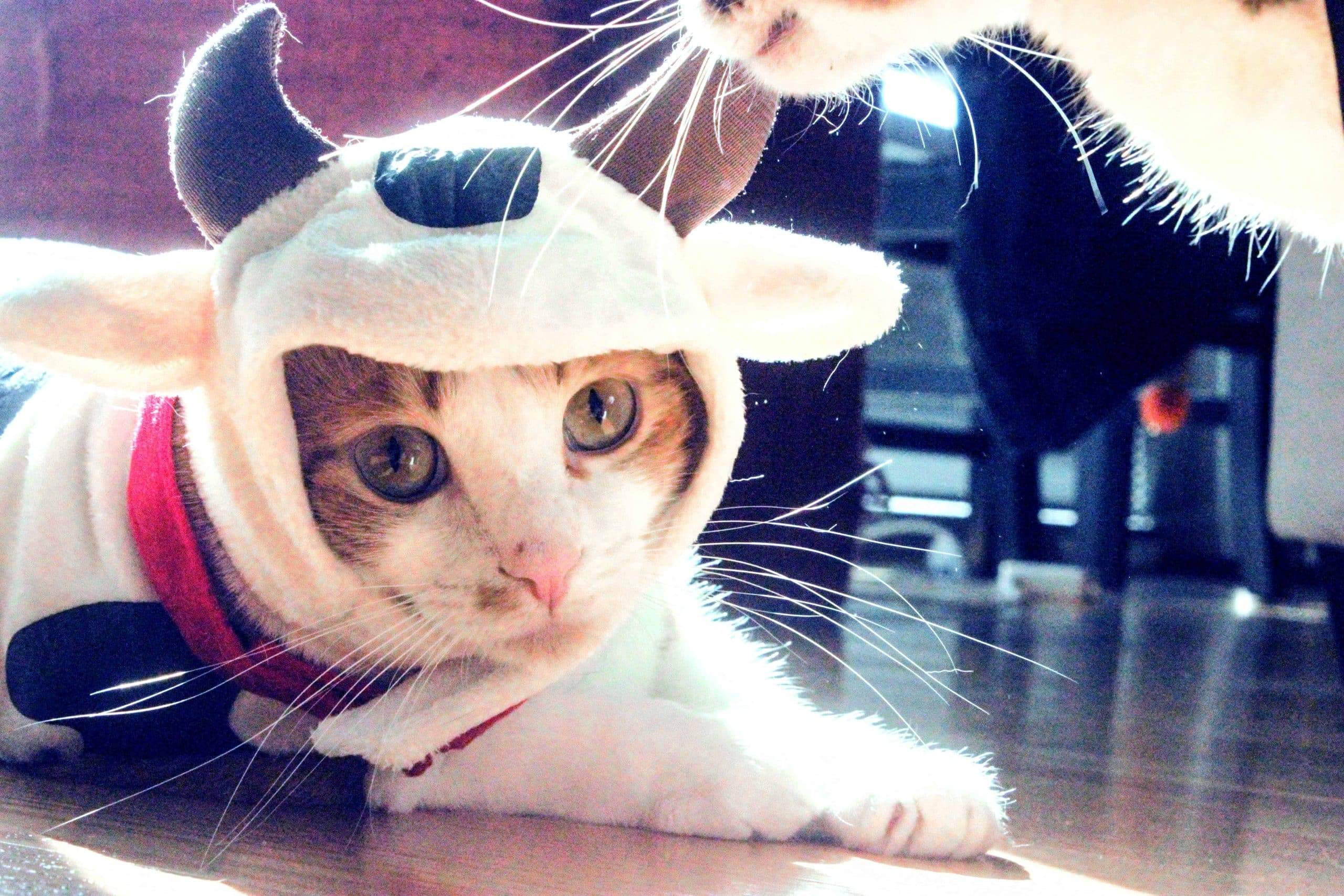I’m no Jackson Galaxy or Cesar Millan. I could’ve used those shows during my childhood when my neighbor’s cat, Clover, attacked my face. Clover had a beef with my cat, Smokey, and I was caught in the crossfire of a country cat regional war. I was naïve then. Now, I don’t trust any plant-named animals.
Tail Movements
Wouldn’t it be convenient to know when to approach your crabby roommate concerning rent money by seeing what their tail is doing?
Dogs and cats provide us with this luxury.
Cats’ tails quiver back and forth when they’re thrilled. The slapping of their tails up and down can either be them being content or agitated. (Thanks for the mixed signals there, felines.) The straightened tail is an indicator that they are pleased in their environment. Dogs’ tails have similar characteristics. Dog tails wagging back and forth can be a sign of happiness, but sometimes it’s because they’re upset. (Again with the mixed signals!) Though your pupper might seem happy to see you home with that wiggly tail of his, Ralphie might be actually be annoyed that you weren’t home to watch “The Price is Right” with him, you monster. A pooch with a stiff, still tail indicates that someone is grabbing their attention, and dogs with tucked tails indicate that they’re feeling vulnerable. A high tail? That’s when they’re feelin’ at ease and right as rain.
Vocal Behavior
Meowing and barking read like WebMD diagnoses. It can be as simple as:
• “Pet me, friend!”
• “Umm … you’re in my spot.”
• “Can you maybe change my litter?”
• “I’d like a piece of that chicken, madame.”
… or as severe as, “I need to take a trip to the vet, so get the Prius started.” Don’t immediately panic when Noodle is being overly gregarious, but do make sure to get that sweetcheeks an appointment with Dr. Lipschitz. Or heck, Lovey may just want to share some thoughts on existentialism.
Dogs in need will whimper, while a cat will meow more frequently to achieve the same effect. A whimper is a sound that can break a heart into countless shards, as it’s an indication they’re going through something traumatic — like experiencing pain or an immense amount of melancholy due to the series finale of “Fresh Prince of Bel-Air.” When your dog begins barking at another dog and owner passing by, it could be anything from, “This is my territory, dude!” or, “W’sup, mate?”
Interestingly, the noises that we make are believed to be the root of domesticated animals using their vocals. So they might be telling us to move onto a new topic, that they hate the new “babe” you’re into, or just questioning whether you’re going to finish those chicken nuggets or what?
Eyes
Much like how my parents could tell how I was feeling by looking at my eyes in high school, we can achieve the same with pets. Both cats and dogs share similarities with each other in the mean-mugging department. Both tend to have lethargic, slow-blinking eyes when they are comfortable, content, trusting, or feeling friendly toward an individual. The wandering eyes are signs of stress, discomfort, distrust, or a need for space. The “whale eye” pertains solely to dogs. It is a fancy term for the moment before a dog is about to bite. Beware of the whale eye, which is when the whites of a dog’s eyes are totally exposed. A cold stare in your direction is because you’re freaking them out. And lastly, the avoidance of eye contact is their way of saying, “I don’t want any trouble, pal.”
The classic “Halloween cat” look, in which the feline displays a bushy tail, arched back, gigantic pupils, and gnashed teeth, is an ideal example of an unhappy cat. We see the entirety of its body displaying uneasiness. Just keep the tricks and treats to yourself and move away from the angry little kitty. The little lawn lions are capable of channeling their ancestors’ speed, agility, and claw-pawed dexterity.
Hope this helps keep you out of the woods with Mittens, Clover, Ralphie, and the likes. Truth be told, it doesn’t take much to figure out your individual pets’ body language. Until then, just keep open lines of communication and know when to walk away from their crabby little moods.

